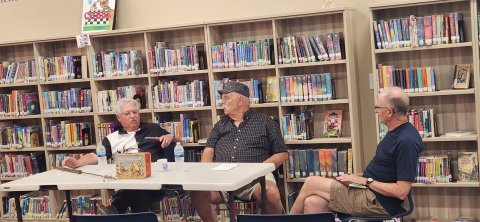We are pursing a Federal grant through the Flexible Facilities Program with the goal of building a community room addition onto the library. The grant application is due July 11th, and we hope to hear back sometime in October.
We have been asking for community input on this project, and we welcome yours! Please send comments and suggestions to director@princetonpublib.org.
FAQs
Where would the community room be built?
In our current back yard, to the north of our building.
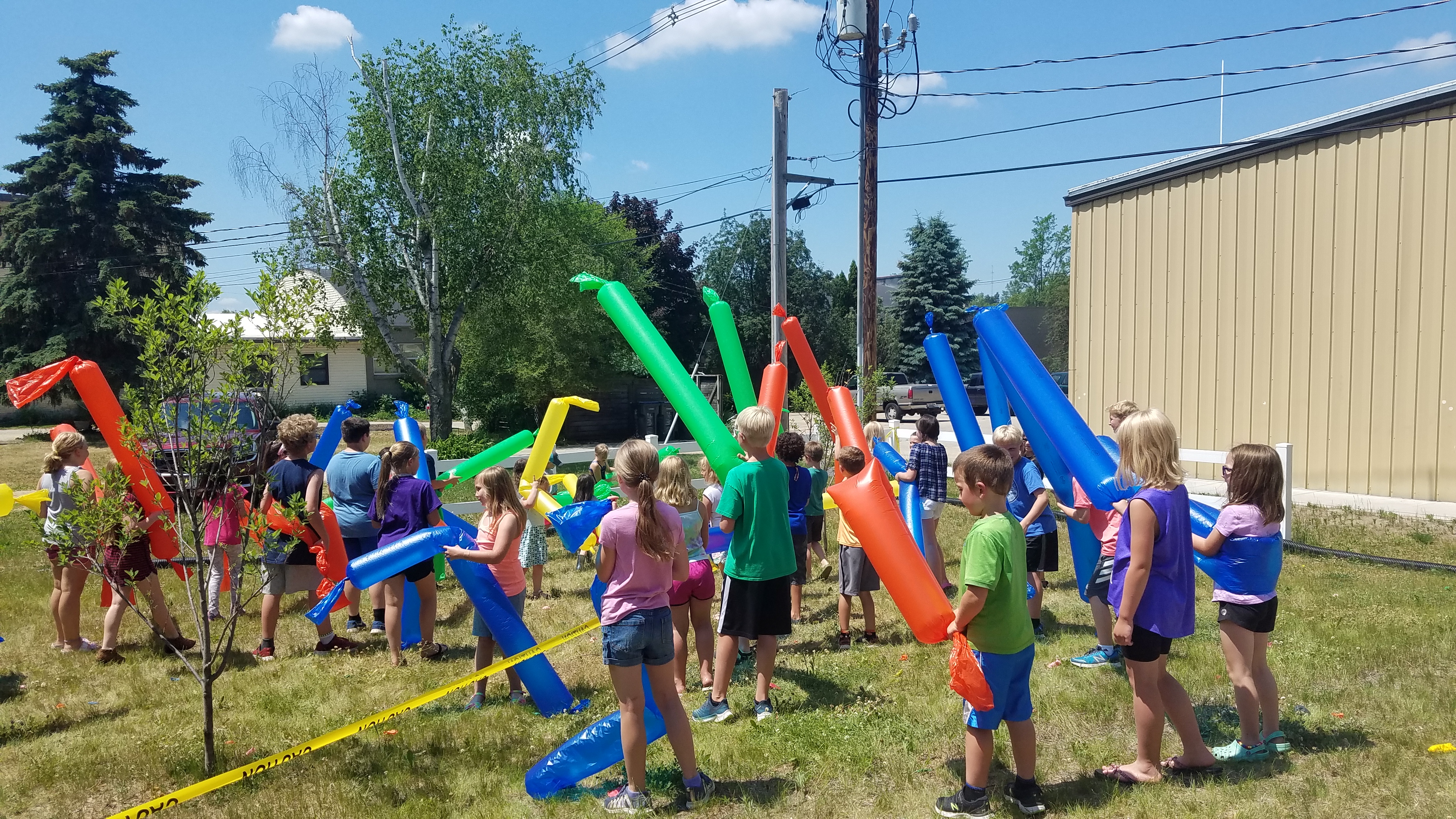
Why do we need a community room?
For many reasons!
1) We would like to expand our services to help people with health concerns. With a community room and adjoining kitchenette, we could offer healthy cooking classes, exercise classes, dance classes, and other programs. We could expand the health-related programs we already hold in cooperation with the Green Lake County Health Department and Aging and Disability Resource Center. Finally, with the extra space given us in the community room, we could transform one of our meeting rooms into a telehealth room.
2) We don't have enough room for our regular programming. Many, many people use our library! Last year, we had an average of 70 patron visits per day, up 12% from the previous year. Program attendance rose 25% from the previous year, and we sometimes get over 70 people at our programs, especially during the summer. However, we don't have any dedicated programming space. We make do with space meant for regular library use. Finally, during the pandemic, we did not have the space required for social distancing, and thus were unable to hold many programs that people needed. With a community room, we could guarantee that programming would never be shut down.
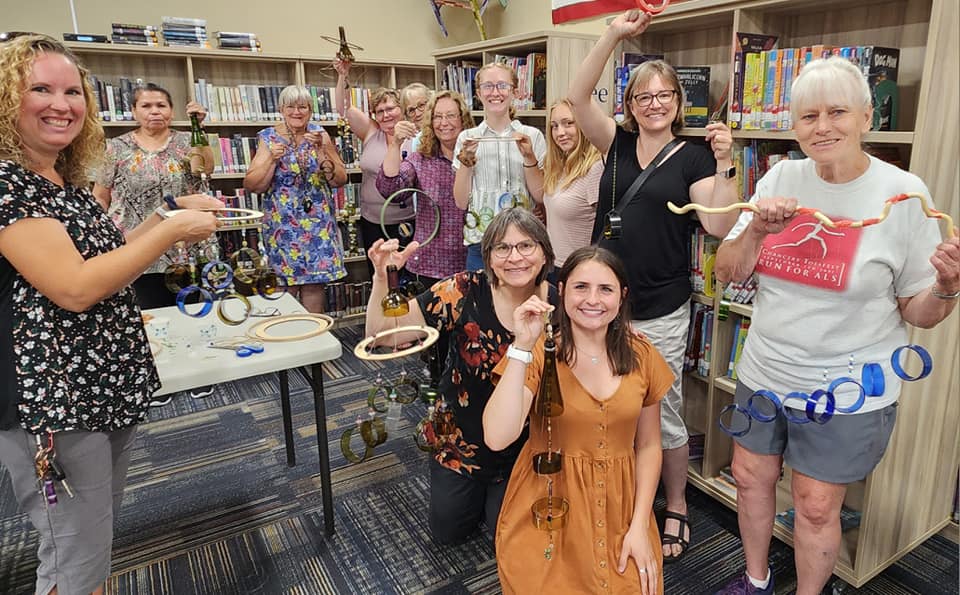
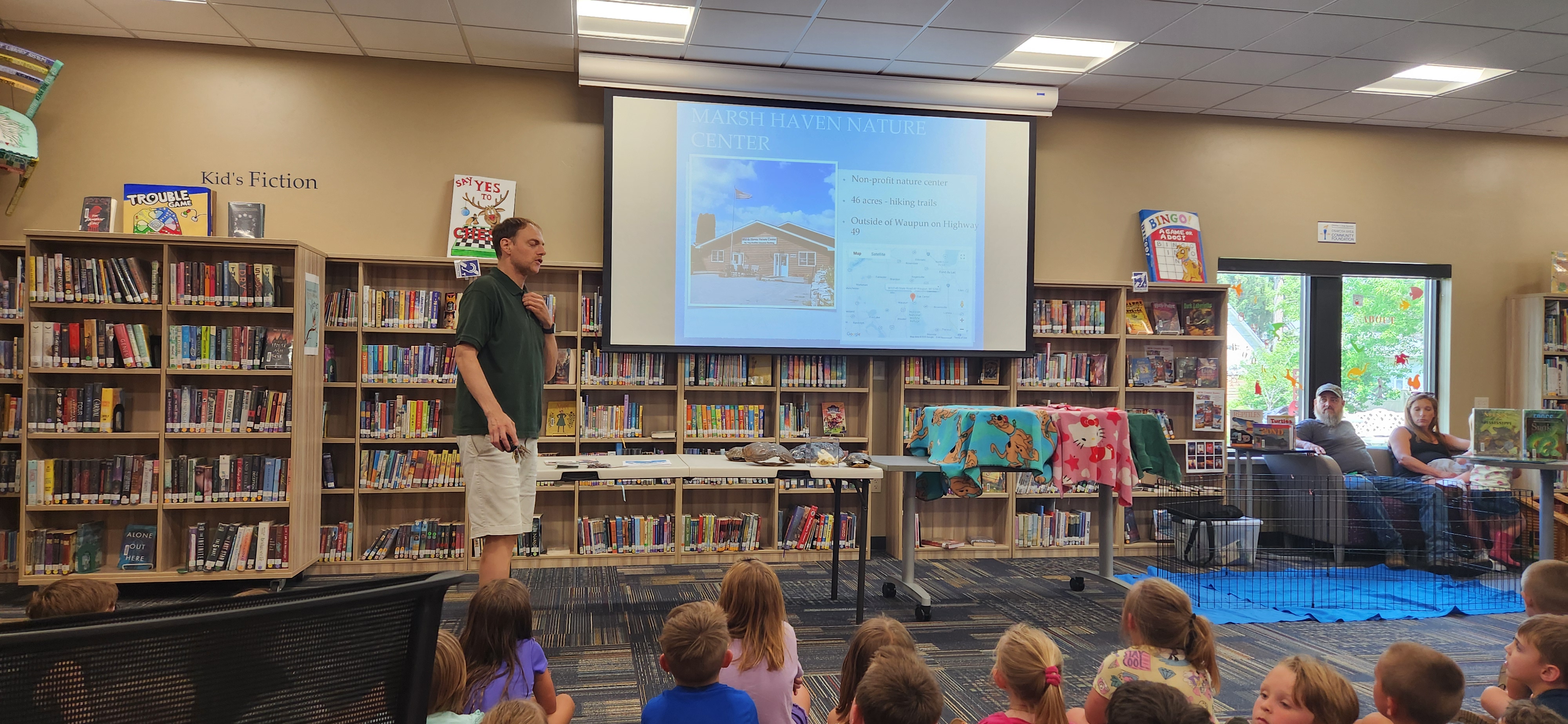
Can't we use our meeting rooms?
We do love our meeting rooms!
They are named after the individuals who donated the most towards the construction of our current building- more on that below.
However, our meeting rooms don't work for larger programs.
Our meeting rooms are also frequently in use by patrons, particularly those who need a private space to consult with a social worker, receive tutoring, attend a virtual job interview, etc. Our meeting rooms are also frequently reserved by groups like the Knitting Club, Alcoholics Anonymous, Library Board, etc.
Our small meeting room seats about five people at maximum.
Because we have so little storage space, this room also sometimes act as overflow storage space.
We would like to turn this room into a dedicated "telehealth" room. People could come here to have virtual visits with their doctors, using equipment like a laptop with webcam, blood pressure cuff, oximeter, and no-touch infrared thermometer. We could also install a hearing loop in this room to help the hearing impaired using T-coil technology.
Our bigger meeting room seats about ten people, but our programs often have more than ten attendees.
In addition, the "big" meeting room has a large conference table that takes up the majority of the space and cannot be moved.
We would also like to install a hearing loop in this room to help the hearing impaired using T-coil technology.
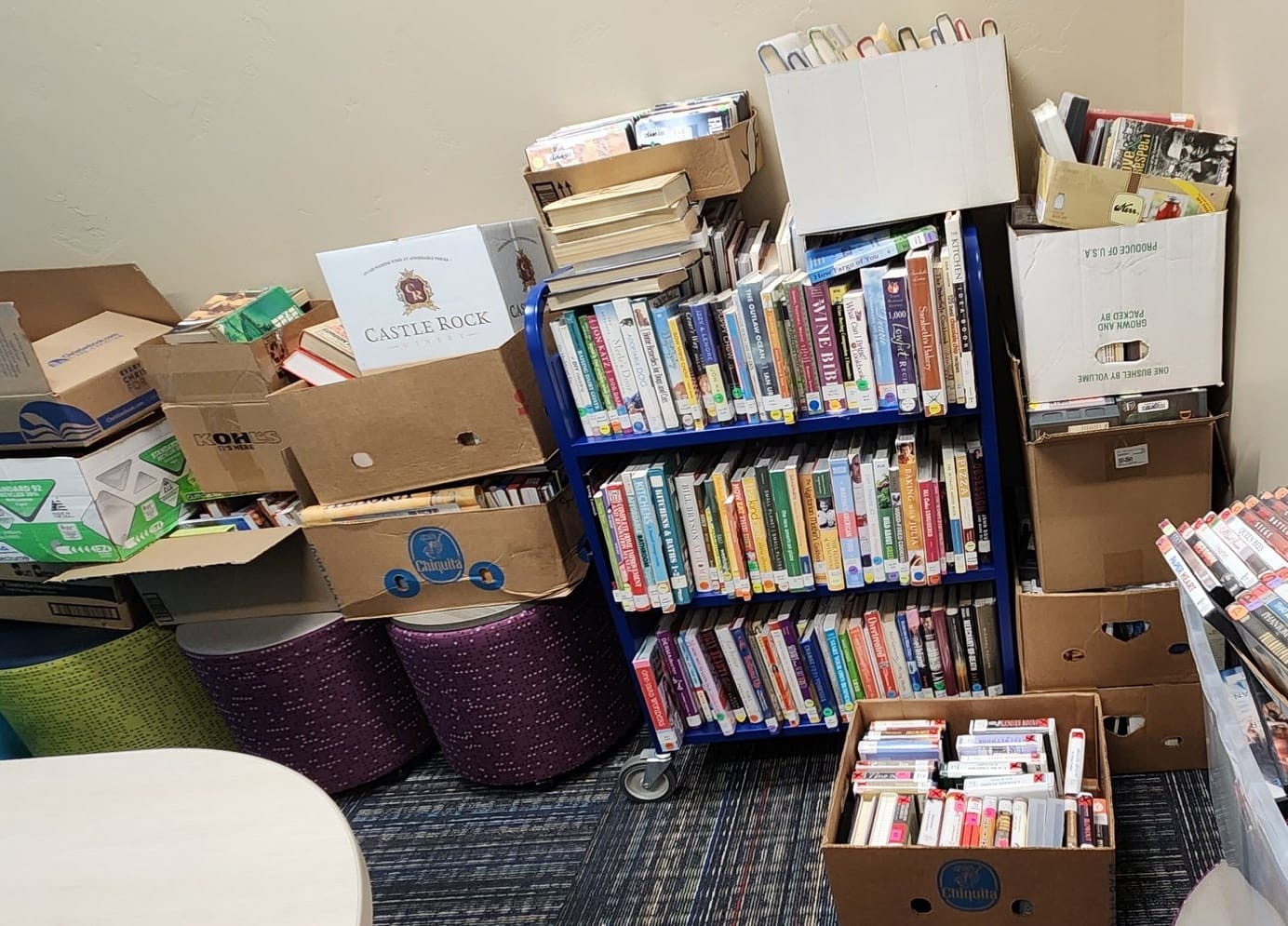
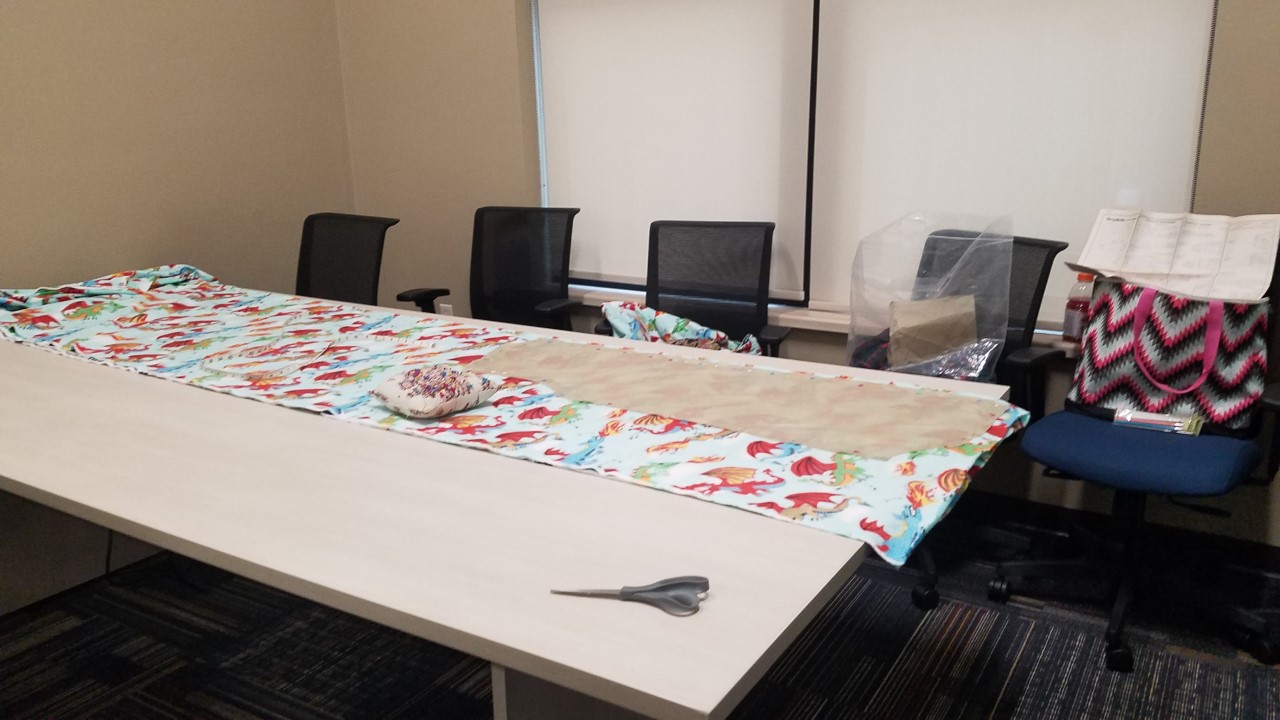
Why do we need a separate space to hold programs?
Right now, we have to move several bookshelves and tables in order to hold a program. We're grateful we can do this, but since we often have programs several times per week, this means continuously moving furniture. Not only is this difficult for staff, our customers can't "shop" for books in this area. During set up and the program itself, people cannot access books blocked by program participants, equipment, and the shelves we have to move.
While the program is going on, we also disrupt anyone in the library who is trying to read or work- especially since our public computers are located right next to this area, with no wall or barrier in between. In addition, our children's area is also right next to the teen area where we typically hold programs. This means that our programs are often conflict with activity in our nearby children and teen areas- there is no wall or space buffer between them.
Our "program space" isn't really equipped for programs either. We have a very limited ability to serve refreshments, the carpeted floors aren't easy to clean after messy projects, and we have to haul folding tables and chairs from storage.
Finally, some of our programs, particularly health programs we hold with Green Lake County, are often based around sensitive topics like dementia, overdose training, and planning for the end of life. Patrons feel less able to ask questions about these issues when they are seated in an open area of the library where anyone can listen. In addition, we could plan more and larger programs.
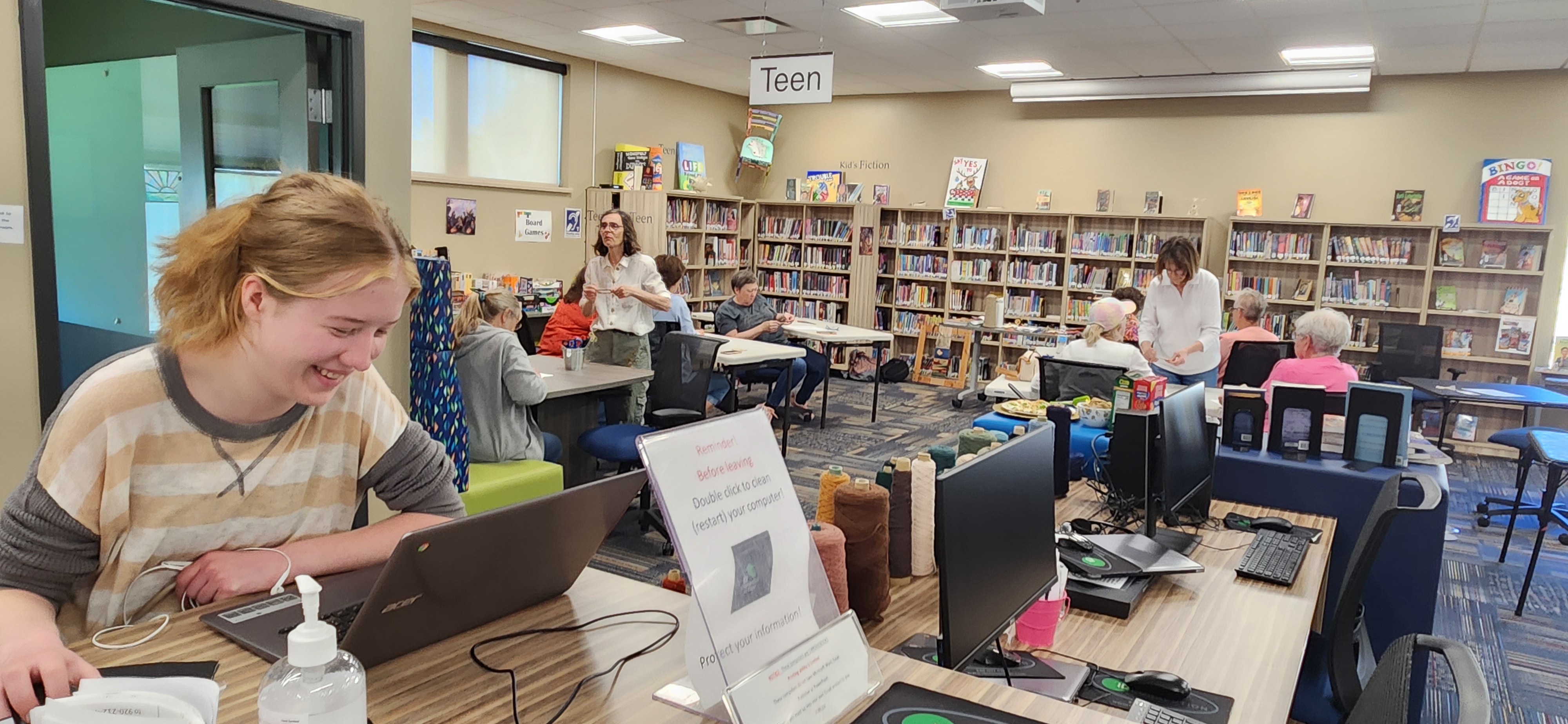
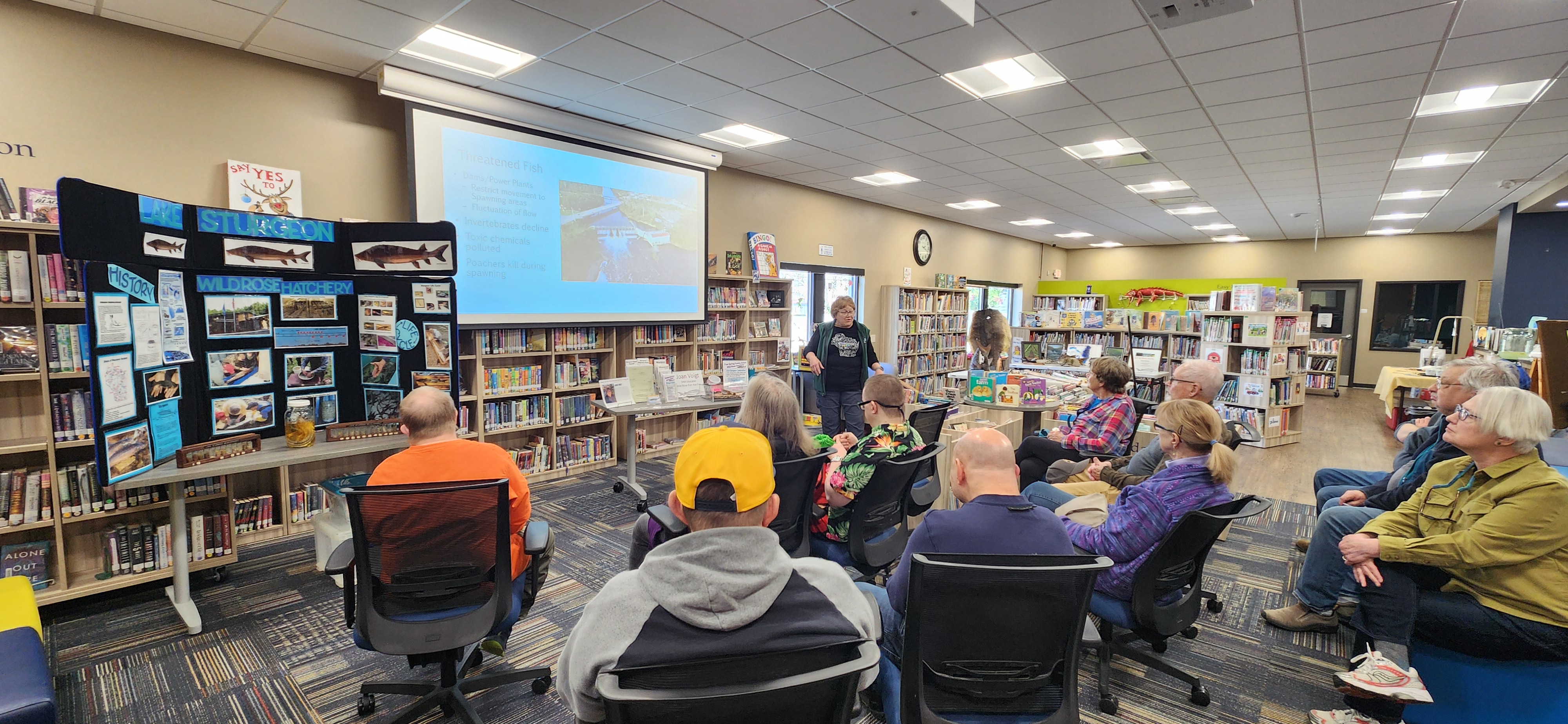
Would other groups benefit from a community room?
Yes! Library programs are not the only events for which we need space. We are a gathering place for our entire community.
We host events for our city's Chamber of Commerce, Green Lake County's health and social services departments, and many other groups. Below are pictures of meetings of the Princeton Historical Society and the Princeton Women's Club.
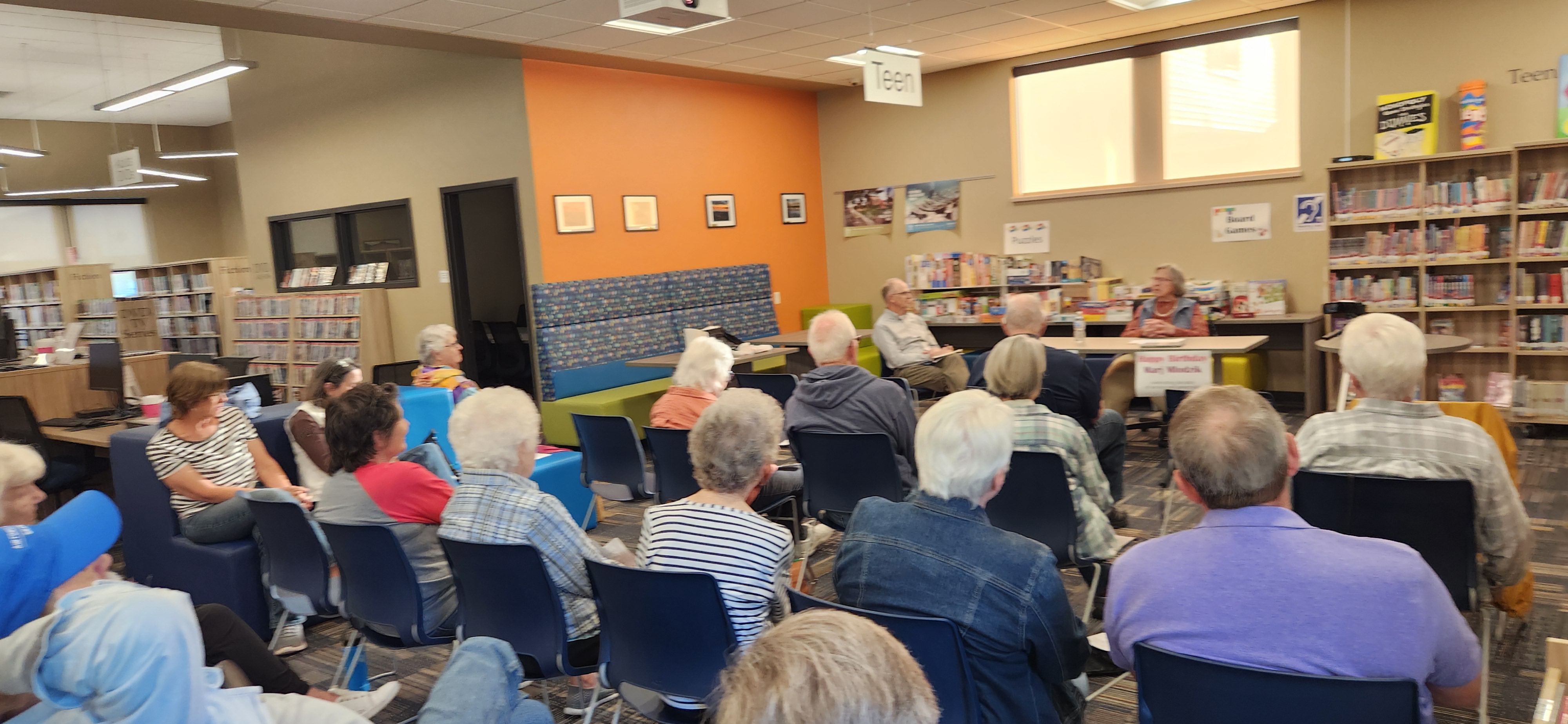
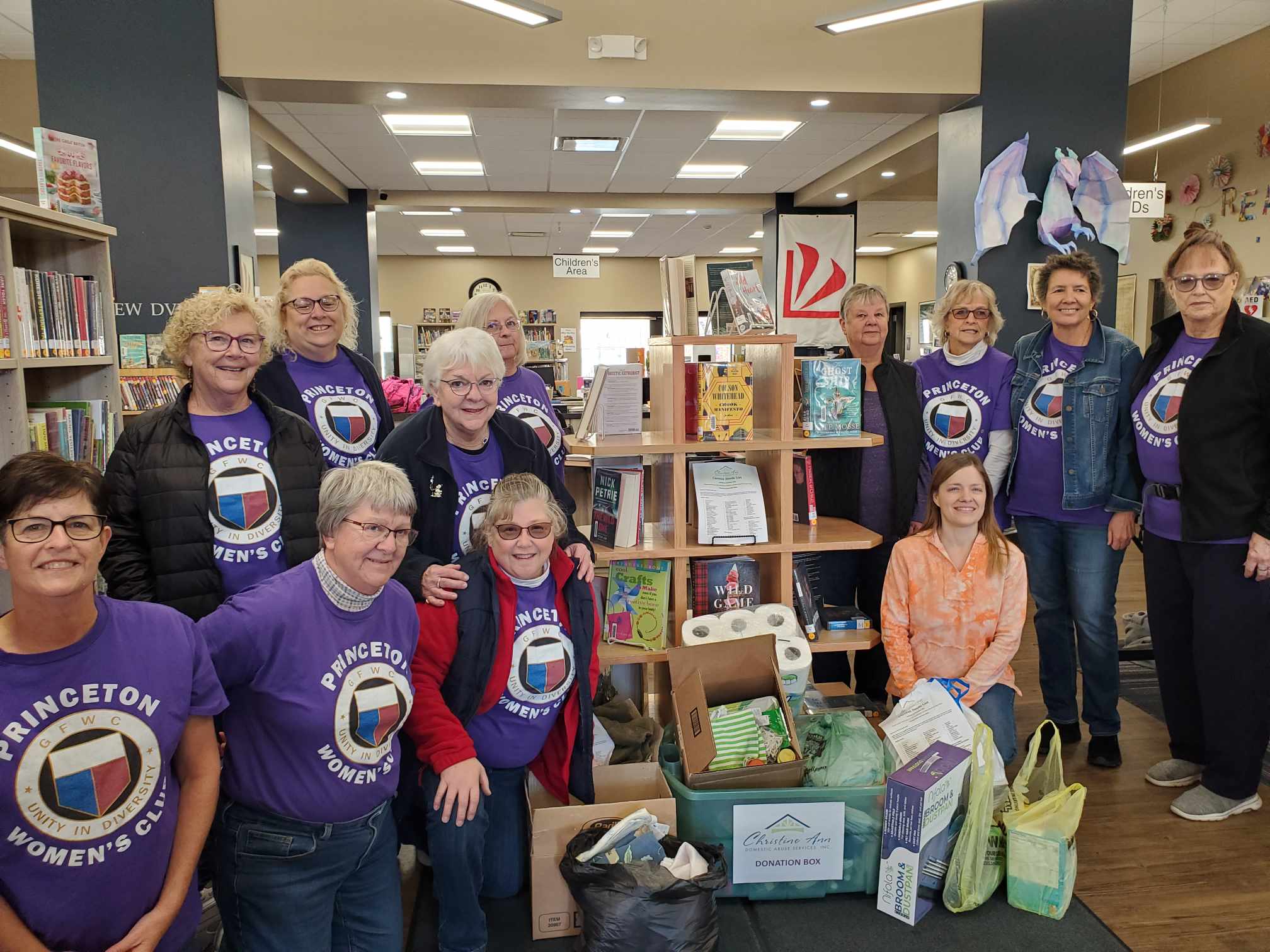
How many people would be able to use the new community room?
We are hoping to be able to build enough space for up to 100 people. Right now, even when we move all of the furniture we can, there's not enough space for all of the people who want to attend our most popular programs. In the summer, we regularly have over 70 attendees at our programs.
We want to plan for 100 people at future programs because:
- We also need room for performers/speakers to move around and for their animals/props/gear
- We should plan for growth so that we don't immediately wish we had built bigger
- If we have a little extra space per person, we could have programs that allow movement, like exercise classes, a dance class, etc
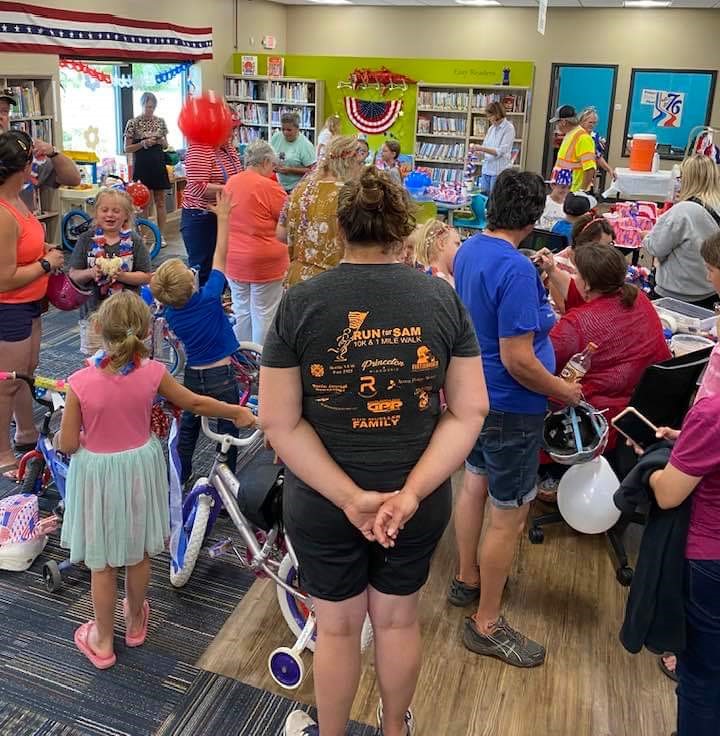
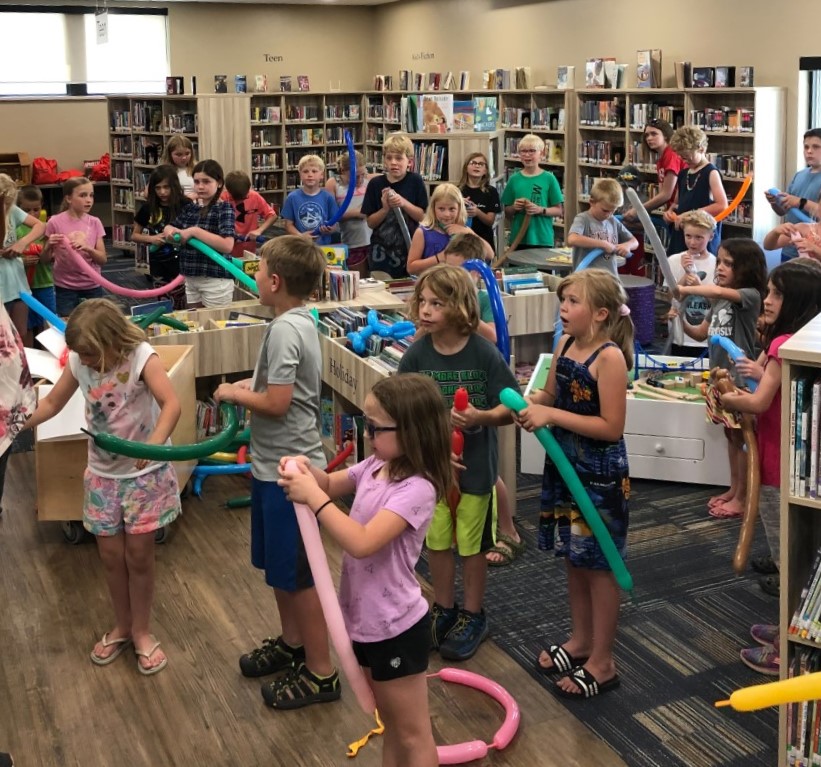
Can't we have programs outside?
The weather often prevents us from doing so, even when the temperature is moderate.
Craft projects aren't easy to do when the wind is blowing your materials around, or the uneven ground makes your table wobbly.
Sometimes we are able to hold parts of our events outside, but in rainy weather we have to squish underneath the overhang of our building.
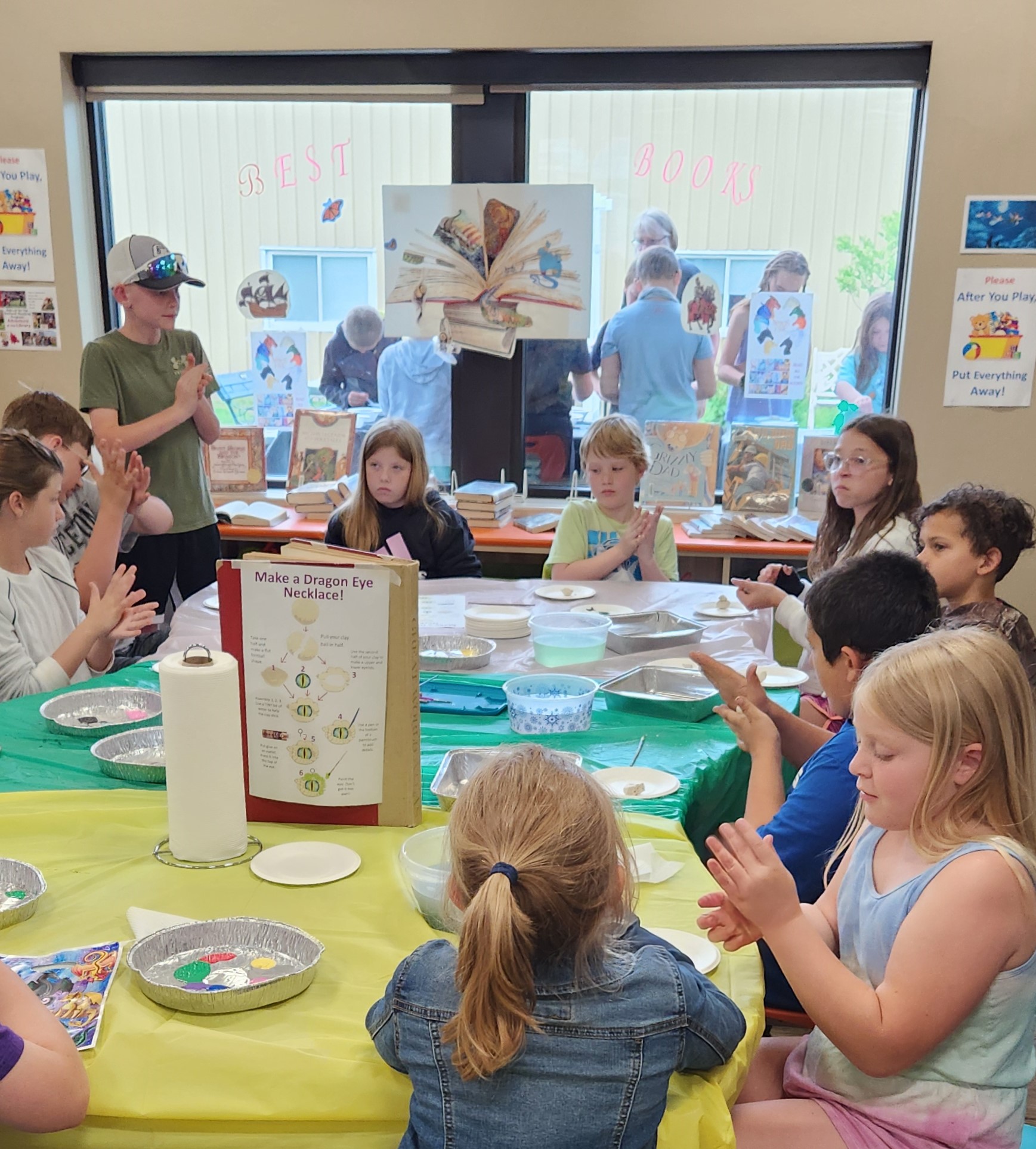
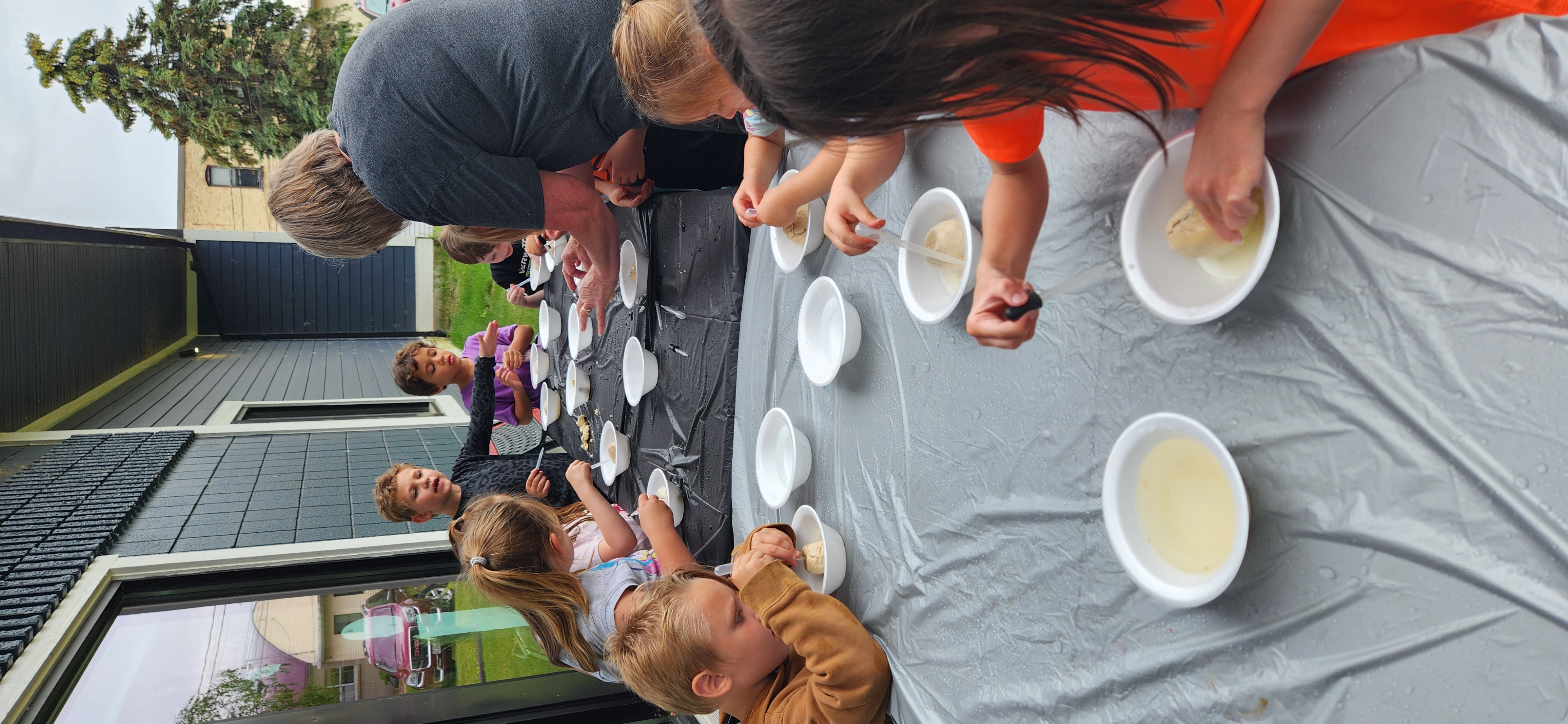
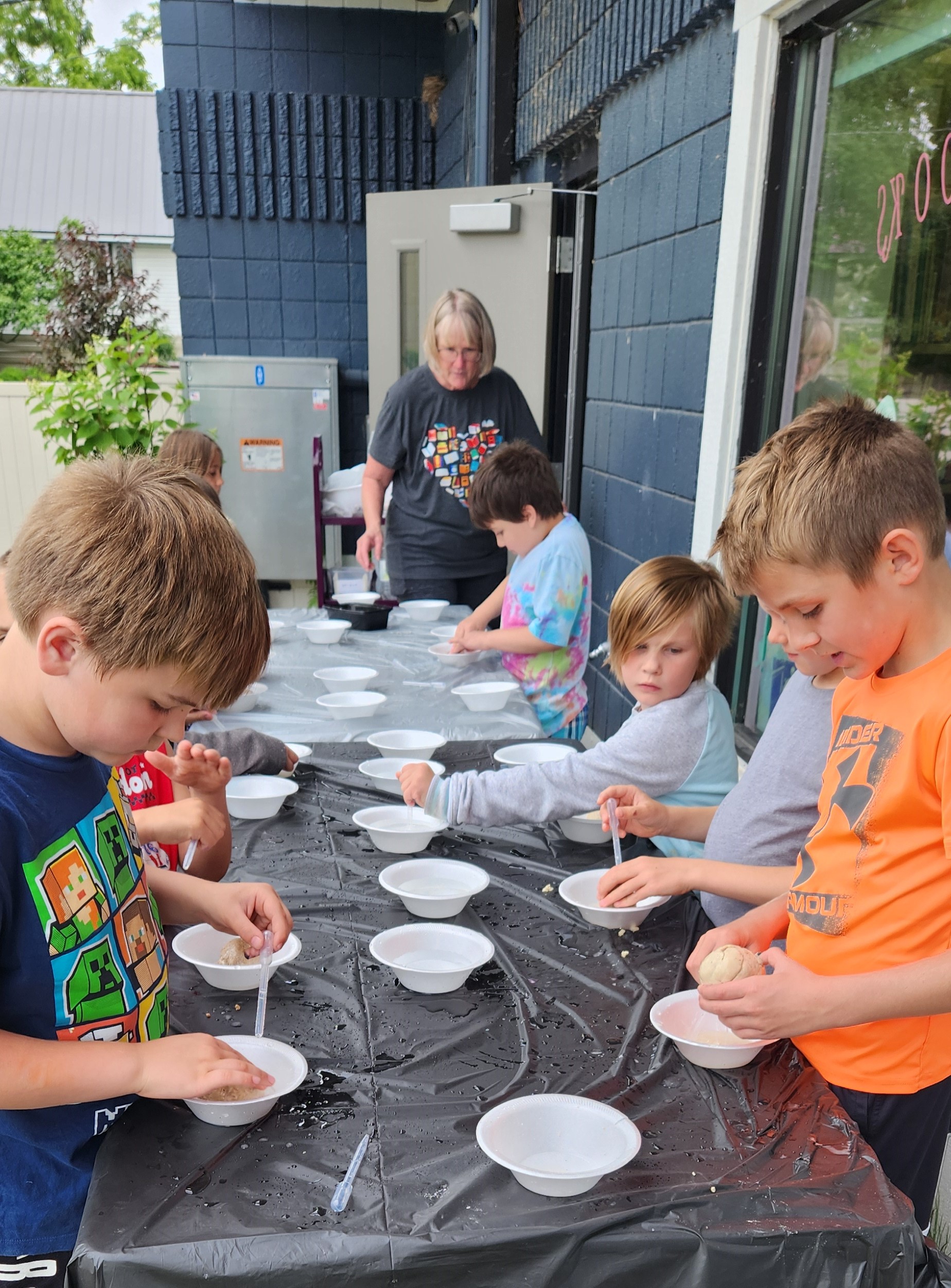
Weather isn't the only obstacle to holding outdoor programs. Our backyard is surrounded by noise as well- an AirBnB to our east, a commercial building and apartments to our west, a busy city street to our south, and the fire station and heavily used highway 23/73 to the north.
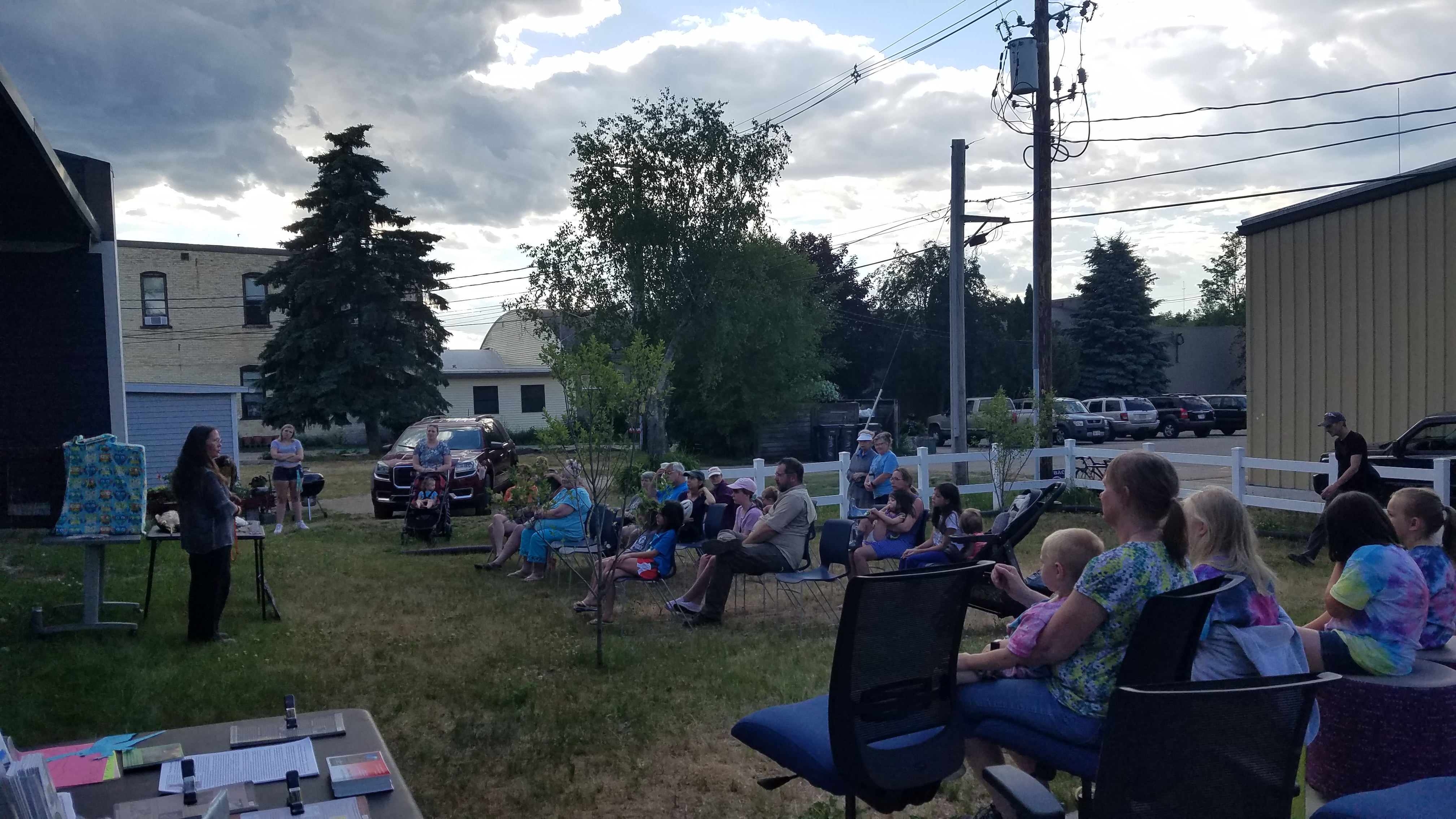
Why can't we use other spaces around town?
Sometimes we are able to borrow space from the school or fire department. However, they need their space for their own activities as well.
Moving programs away from the library also defeats the purpose of library programs. We want to link our exciting events with educational books, provide a neutral space for social connections, and be a community hub.
This picture below was taken during a fencing program the Friends of the Library sponsored in June 2024. Due to rainy weather, we had to move the program into our fire department's training room. This space is also used as the City Council chambers. We moved six tables and lots of chairs to free up space for the swordsmen. During an emergency, we would have had to evacuate the room so that fire personnel could put on their gear and use their communications equipment.
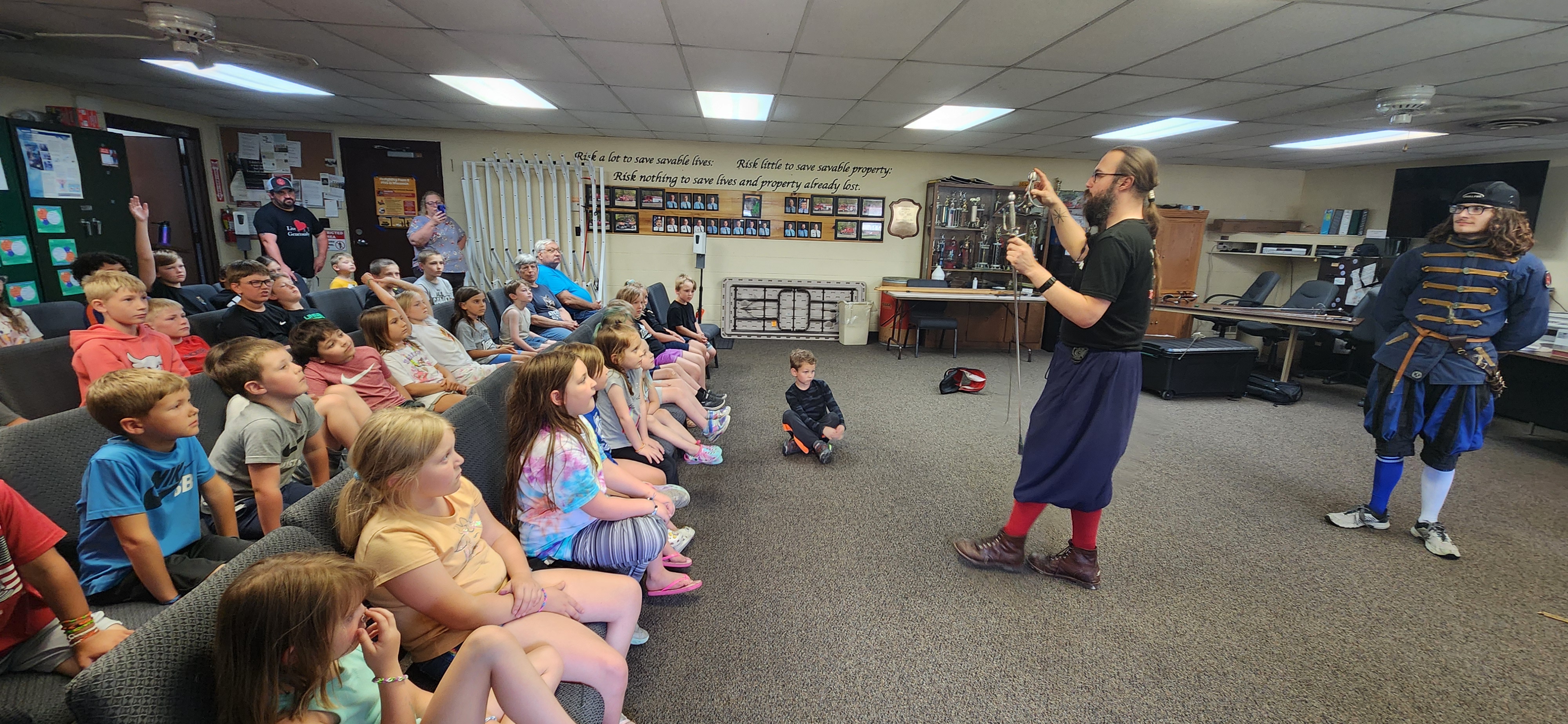
Would the new community room have computers?
Yes- for classes and programs.
Our public computers would stay where they are- but people working at the computers would not be disrupted nearly as much, since all of our larger meetings and programs would move to the new community room.
We would like to have a small portable computer lab for use in the new room too. We are writing the grant to include this feature. This computer lab could be used for tech literacy classes without disturbing other people in the library.
Previously, we have taught classes like Email Basics and Google Suite 101, but either we had to use all of the available public computers for the class and risk being disrupted by the public, or we had to use the larger meeting room and people had to bring their own laptops or use our very limited old Chromebooks.
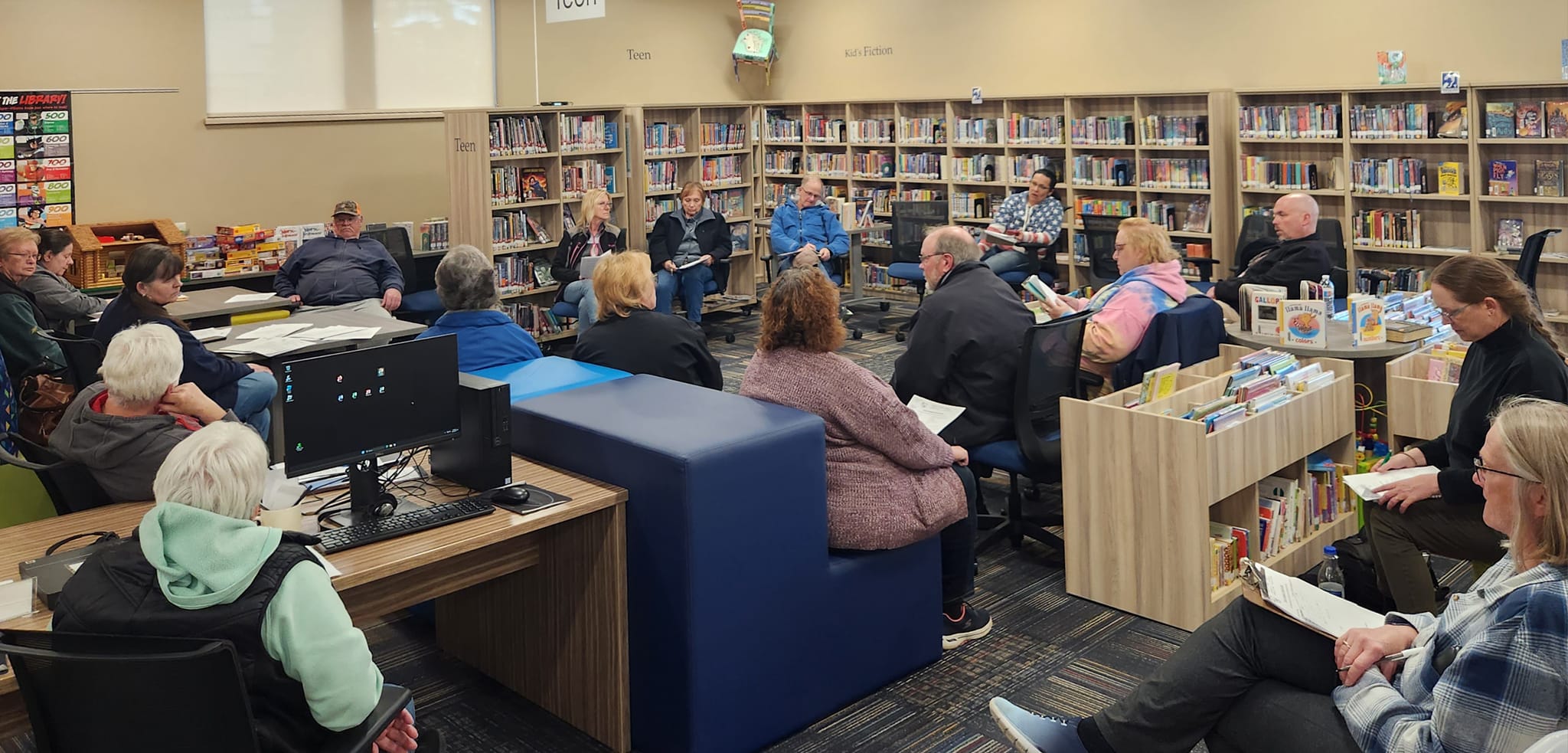
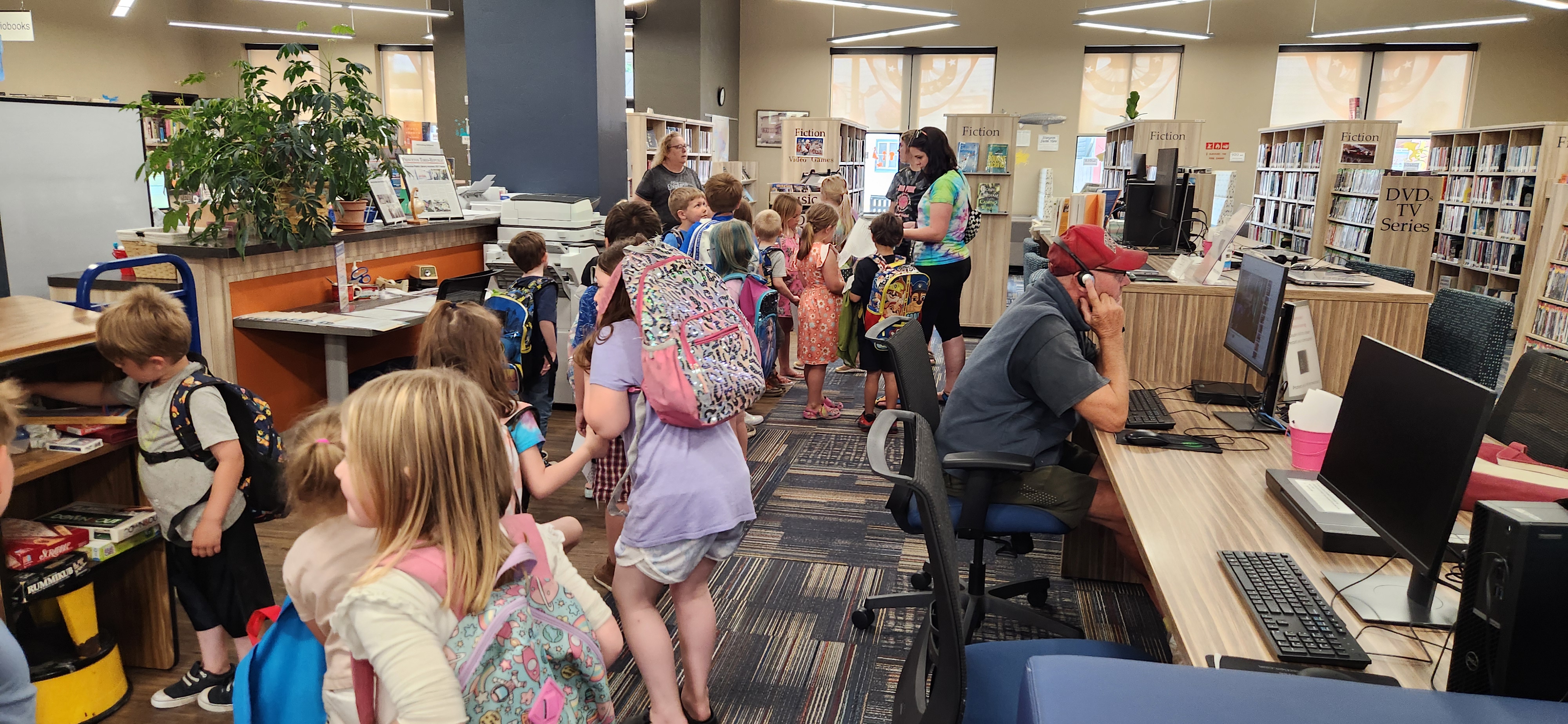
Will we be getting faster internet for the computers?
Yes! Regardless of whether our community room project is funded, we will be getting faster internet. The State of Wisconsin's Technology for Educational Achievement program (TEACH) has recently announced they will be moving forward with a project to upgrade all libraires on their network to the new FCC broadband speed of 100 Mbps.
Why do we need a grant?
Our city cannot afford to fund this project, and cannot raise enough via taxes. Princeton has a large proportion of seniors (33% of our population) and low-income families, with a poverty rate of 16.19%. More than 70% of students in our school receive free or reduced cost meals. We are applying for the federal Flexible Facilities Program grant, which we hope will fund the majority, if not the entirety, of our project.
Why didn't the library build a community room last time?
Our remodeled library, which opened in 2019, was entirely funded by grants, donations, and fundraisers. We are very grateful for the incredibly hard work put in by the Library Building Committee and the Friends of the Library. They spent years doing bake sales, concessions, book sales, and every other kind of fundraiser. They did plan for a community room, in exactly the spot where we hope to build it. However, construction costs increased and funds ran out.
Our two meeting rooms are named after the individuals who donated the most towards the construction of our current building - the Mashuda family and the Schweder family.
Our largest grant for the 2019 project was $50,000 from the USDA. The grant was written by our City Administrator, Mary Lou Neubauer.
MANY people donated towards our building, and they are honored on the donor wall in the front entrance of the library. Each book in our "book shelf" is engraved with the names of people who contributed at least $200 towards the building project from 2015-2019.
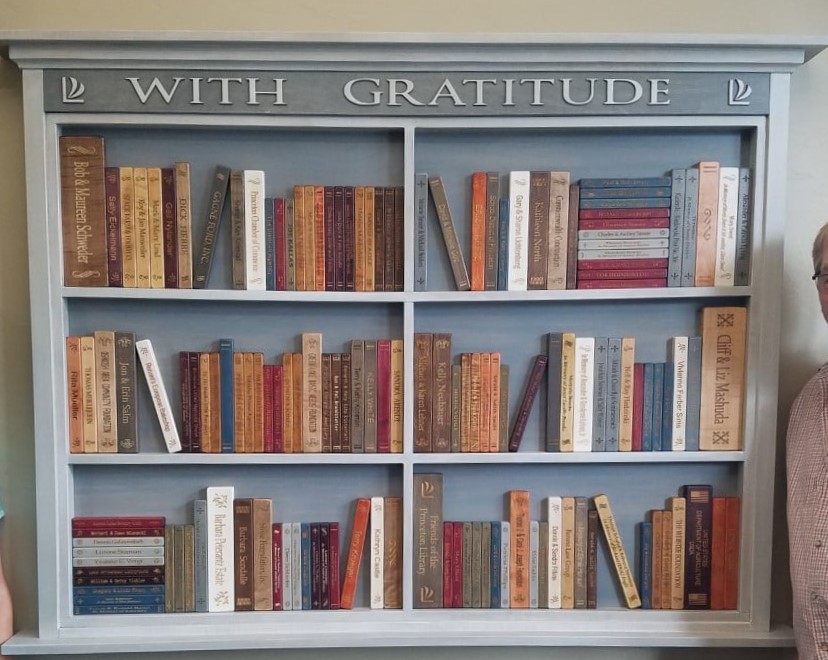
Three artists created the donor wall art, spending many hours of their time but charging nothing except the cost of materials. They are:
Mary Lind, who designed the piece and did the staining, and painting; Mark Lind, who did all the woodworking; and Chad Wagner of Custom Engraving and Woodworking, who did all of the laser engraving, including cutting out the letters of "With Gratitude."
We are indeed very grateful to them and to the library building donors!
What would the new community space look like?
We would like to have a large multipurpose room of about 1,300 square feet, with low-maintenance concrete or vinyl plank floors.
A combination kitchenette and storage space of about 930 feet would be located next to this room, separated fully or in part by a wall.
Because of the increased building capacity, we believe building codes will require us to have additional bathrooms as well.
To connect the old building with the new addition, we would add a small lobby. The entrance would be in the teen/children’s area, where the window is now.
For now, we just have a rough draft plan for the proposed space. If we get the grant we are pursuing, we could hire an architect to create drawings for us.
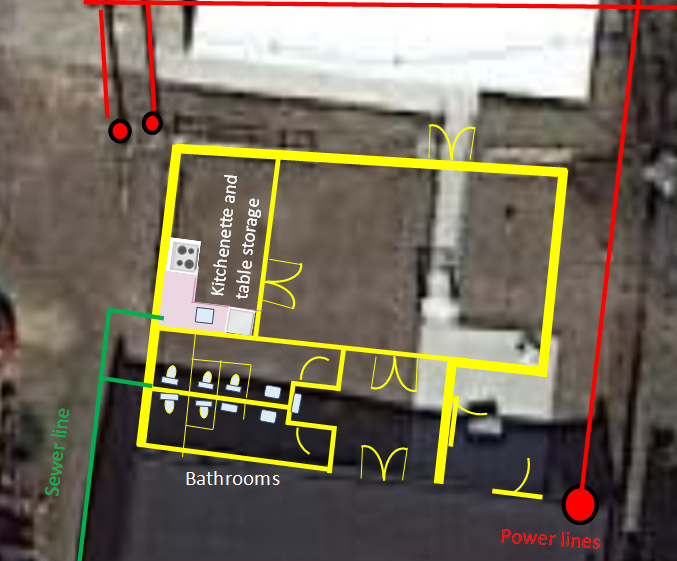
Why plan for a 1,300 square foot community room?
There are formulas for calculating how many square feet you need per person for various activities. These can differ slightly in what is "correct," but in ballpark figures:
If every person is seated at a 6 foot desk or table for a craft or banquet (2 people at each table), then the formula is 18 square feet per person X 100 people = 1,800 square feet
If everyone is sitting in chairs in rows, then the formula is 6-9 square feet per person (to allow for aisles) X 100 people = 600-900 square feet
1,300 square feet is a "happy medium" between these two figures, allowing for some people to seated while a performer or presenter has space up front.
In their Public Library Space Needs document, the Wisconsin Department of Public Instruction recommends:
- In a general meeting room, a library should allow 10 square feet per audience seat, plus another 100 square feet for a speaker’s podium / presentation area at the front of the room. (For 100 people, this would be 1,100 square feet)
- Assuming seating at a conference table, allow 30 square feet per seat. As a variation, allow 10 square feet per seat for any additional seating in a gallery or audience, if one is to be provided (if the conference room is used for board meetings, open meetings law requirements may obligate some kind of accommodation for an audience).
- In a storytime room, allow 10 square feet per child, plus another 50 square feet at the front of the room for the program leader. As a variation, note 20 Step 3: Meeting Room Space that many children’s programs include a craft activity, and if that is part of the library’s plan of service, another 5 square feet per seat should be added to this allocation.
- In a computer training lab, allow 50 square feet per station, plus another 80 square feet at the front of the room for the trainer (an allowance of 50 square feet reserves the option of seating two per station).
- Example: In Sampleville, planners reviewed the library’s programming activities and assessed the availability of other meeting facilities in the community. They determined that the library ought to provide a general meeting room to seat 75— this room would also double as the board room—and a separate children’s storytime room to seat 25. The library’s typical storytime program includes a craft activity, so planners use an allocation of 15 square feet per seat in the storytime room. The area needed for the meeting room is 850 square feet (75 x 10, plus another 100 square feet for the speaker). The area needed for the storytime room is 300 square feet (25 x 15, plus another 50 square feet for the storyteller). The total area needed for meeting and programming functions is 1,150 square feet.

